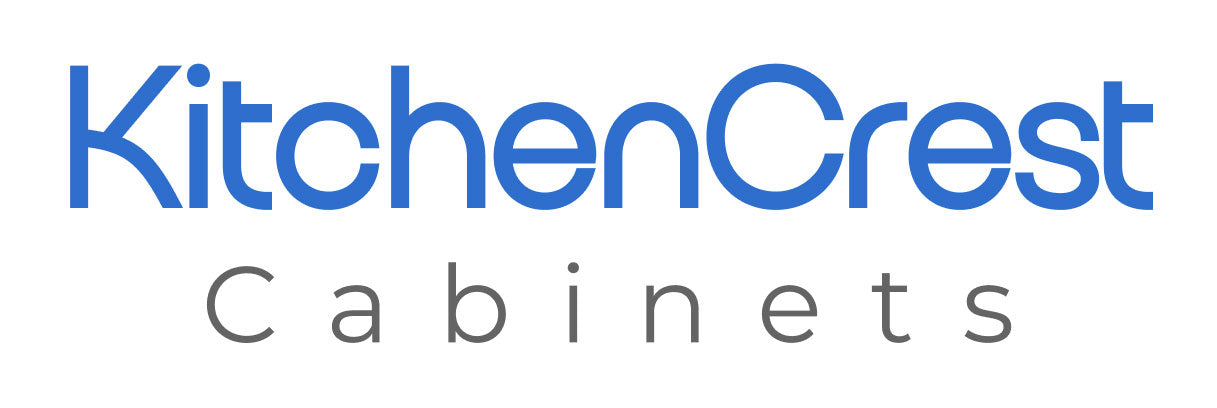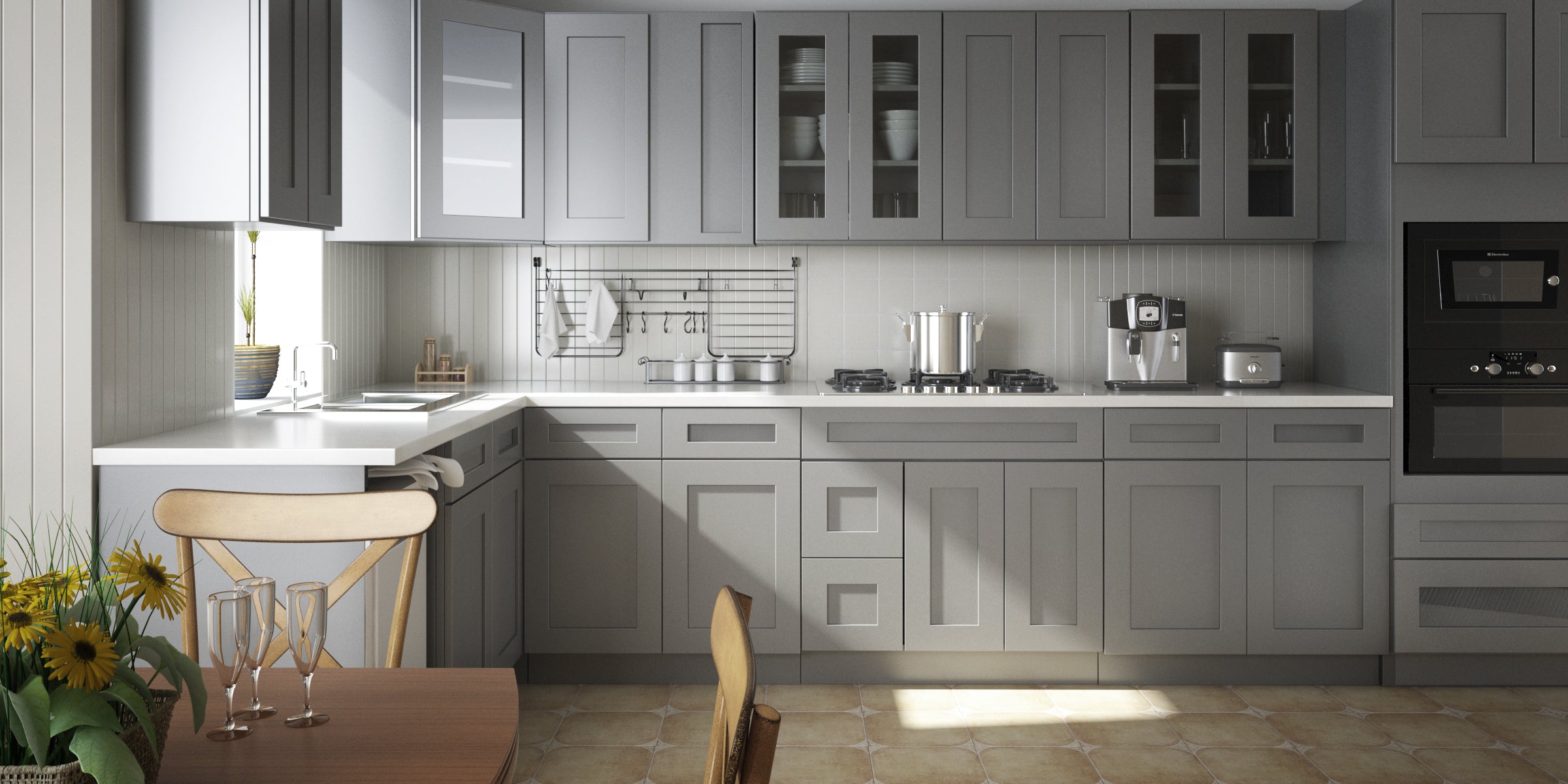Kitchen cabinets form the backbone of a kitchen’s function and design and are the foundation of a lasting kitchen. For builders, contractors and kitchen designers, cabinet construction quality can make or break a project’s long-term success. This client-facing cabinet material guide helps professionals explain the crucial differences between materials and their impact on project outcomes.
How Material Choice Impacts Cabinet Lifespan
Let's look at the difference in longevity between plywood and particleboard. When considering the best cabinet material for high-end kitchens, durability is crucial in the decision-making process.
Plywood's 20+ Year Durability
Plywood is built from thin sheets of real wood veneer, glued together in alternating grain directions. This cross-laminated structure provides durability, stability and resistance to daily wear. It also does the following:
- Resists warping, cracking and sagging even after years of use.
- Withstands the pressure of door swings, hardware and shelf weight.
- Remains structurally sound for over two decades or more, when properly installed and maintained in appropriate conditions.
Research shows that even after 10 years of indoor use, plywood typically retains 84%-100% of its bending strength and 78%-97% of its elasticity, though actual service life varies based on environmental conditions and maintenance.
Particleboard Lifespan 5–7 Years
Particleboard is made from compressed wood shavings, sawdust and resin. According to a study published in the Turkish Journal of Agriculture and Forestry, engineered wood products like particleboard and MDF showed significant degradation in kitchen environments. Its uniform core is weaker and more fragile under real-world kitchen conditions because:
- Adhesives break down faster in warm or humid areas.
- It's vulnerable to swelling, edge delamination and structural weakening.
- Particleboard often needs replacement or repairs within five to seven years.
[Note for Design: Create a graphic timeline showing plywood and particle board at year 1, year 5 and year 15.]
Over time, plywood remains consistent while particleboard shows sagging, bubbling and joint separation.
Why Plywood Excels in Kitchens and How Particle Board Fails
Kitchens are full of moisture, from steam and splashes to under-sink leaks. Plywood’s layered structure gives it built-in resistance to water damage. It also:
- Doesn't expand or swell from brief exposure to spills or humidity.
- Maintains its shape around dishwashers, sinks and vents.
- Reduces the risk of mold and mildew growth.
Particleboard absorbs water easily. Once moisture gets in, the damage is irreversible, and it begins to experience these issues:
- Swelling and bubbling when exposed to even light spills.
- Peeling of outer laminates as the inner core softens and crumbles.
- Decreasing lifespan of the entire cabinet system.
Even with sealing, particleboard’s structure remains vulnerable. Water intrusion can occur through joints, hardware holes or gaps between panels — no amount of edge banding truly prevents internal failure.
Comparing Plywood's Structure to Particleboard
Thanks to its alternating grain design, plywood resists pressure in all directions. This gives it a high strength-to-weight ratio — ideal for upper cabinets, large drawers and pantry storage. It also:
- Holds heavy dishware, cookware and appliances without sagging.
- Keeps fasteners secure over time for stable doors and drawer glides.
- Performs well even after multiple ready-to-assemble (RTA) assemblies and retightenings.
Particleboard's density and structure don’t allow it to hold as much weight, and it shows through the following:
- Shelves begin to bow after storing heavy items.
- Screws and fasteners pull out over time, especially in door hinges.
- Repeated adjustments degrade the integrity of the cabinet.
Using plywood means fewer issues during and after installation. No sagging doors, no warped cabinet boxes and no unexpected service calls for misaligned drawers.
Installation and Assembly Considerations
Material choice significantly impacts installation efficiency and long-term performance:
Plywood benefits during installation:
- Holds screws more securely, reducing the need for pilot holes.
- Can be slightly adjusted or redrilled without compromising structural integrity.
- Maintains dimensional stability during transport and acclimation.
- Accepts modifications for custom fits without splintering or chipping.
Particleboard installation challenges:
- Requires more careful handling to prevent corner and edge damage.
- Limited ability to modify or redrill without compromising strength.
- More sensitive to temperature and humidity changes during installation.
- Higher risk of splitting when installing hardware or making adjustments.
Environmental and Health Considerations
For environmentally conscious clients, material choice extends beyond durability:
Plywood environmental profile:
- It's made from renewable wood resources.
- You can source plywood from certified sustainable forests through Forest Stewardship Council (FSC) certification and the Programme for the Endorsement of Forest Certification (PEFC).
- It has lower formaldehyde emissions compared to particleboard.
- You can potentially recycle plywood when it reaches the end of its lifespan.
Particleboard environmental impact:
- It uses wood waste products in manufacturing.
- Higher resin content means more chemical components.
- Thicker boards may emit higher levels of volatile organic compounds (VOCs) due to increased wood particle and adhesive content, according to a 2020 study published in BioResources.
- A shorter lifespan contributes to more frequent disposal.
The True Cost of Plywood vs. Particleboard Over Time
For contractors seeking to justify cabinet cost to clients, here's how to help them see the bigger picture:
- Cost per year of use: Frame the investment in simple terms, using this formula: Initial Cost/Lifespan in Years = Cost Per Year. An $8,000 plywood kitchen that lasts 20 years equals $400 per year. A $5,000 particle board kitchen that lasts 7 years equals $714 per year. Plywood pays for itself in durability alone.
- Total cost of ownership (TCO): The initial cost is just the beginning. TCO includes replacement parts, repair labor and reinstallation or touch-up work. Particleboard requires more of all three over its shorter life. Plywood, by contrast, stays strong and reliable — saving money and reducing future disruption.
- Reputation and reliability: Every installation reflects your brand. When hardware loosens or cabinets fail, your clients call you — not the manufacturer. Plywood reduces callbacks and improves customer satisfaction. Fewer repairs mean more referrals.
Sales Tools for Contractors, Designers and Retailers
For professionals, it’s not just about selling a product — it’s about providing a solution that holds up. Here’s how to help your clients move past sticker shock:
- “This cabinet will last as long as your flooring and appliances — at minimum.”
- “You’re investing in materials that perform long-term, not just look good on install day.”
- “Fewer service calls mean more time for your next project instead of fixing the last one.”
Cabinetry for Contractors: Building Success Through Quality
Plywood consistently outperforms particleboard in strength, longevity, moisture resistance and real-world durability. And for professionals, that translates to fewer problems, lower lifetime costs and higher customer satisfaction. When you install premium cabinets, you're giving clients a beautiful finish and peace of mind. You’re building a kitchen that provides long-term performance of cabinet materials.
Ready to Work Smarter, Not Cheaper?
Understanding how to prevent cabinet installation callbacks starts with material selection. The plywood vs. particleboard technical specs for builders reveal why premium materials reduce service calls and improve reputation.
At KitchenCrest, we specialize in high-quality plywood cabinetry built to support your work, reputation and bottom line — and we value customer experience above all else.
Request a quote from KitchenCrest and give your clients a kitchen that performs well in the long haul. All our plywood cabinets, proudly sourced from leading manufacturers in Southeast Asia, are available RTA with clear instructions for fast and accurate builds. Contractors appreciate that our cabinets are designed for speed without compromising quality. Plus, they're in stock, which means fast delivery times!




